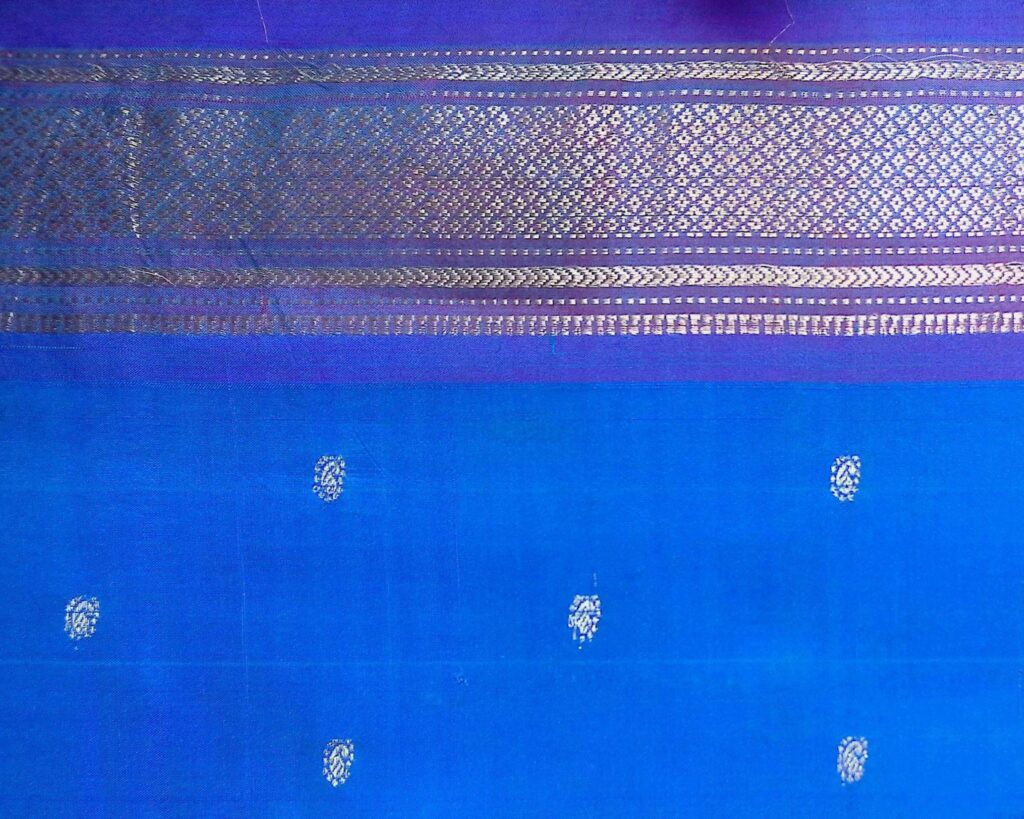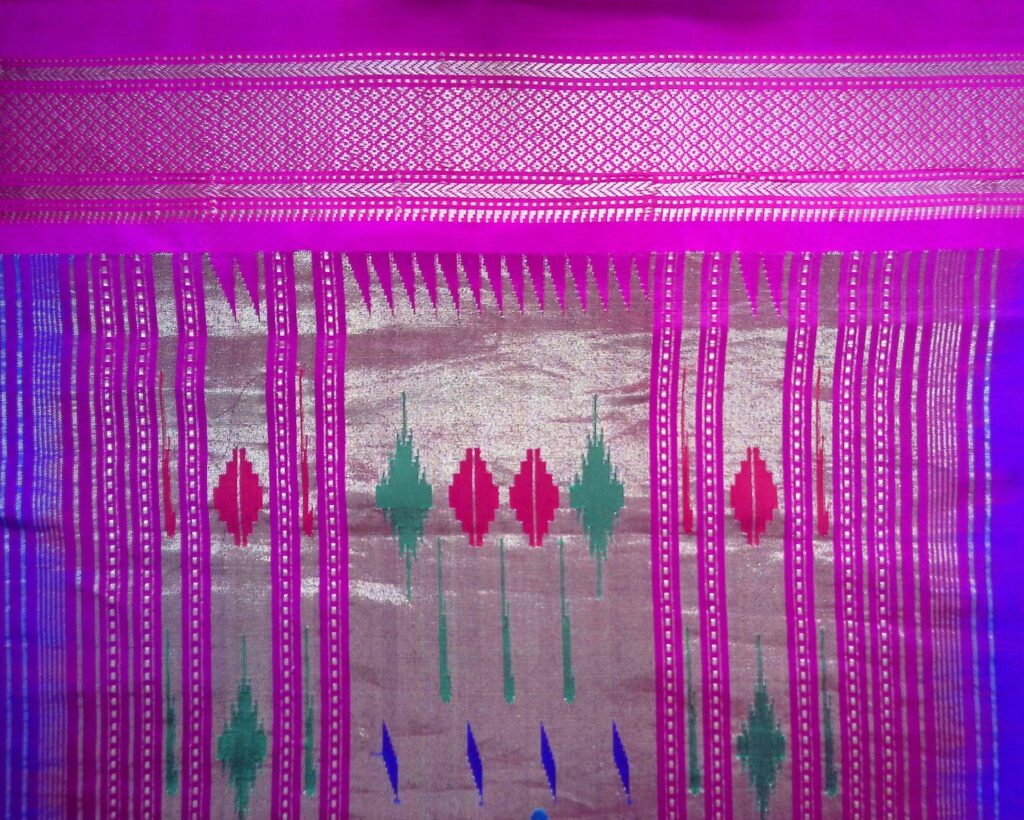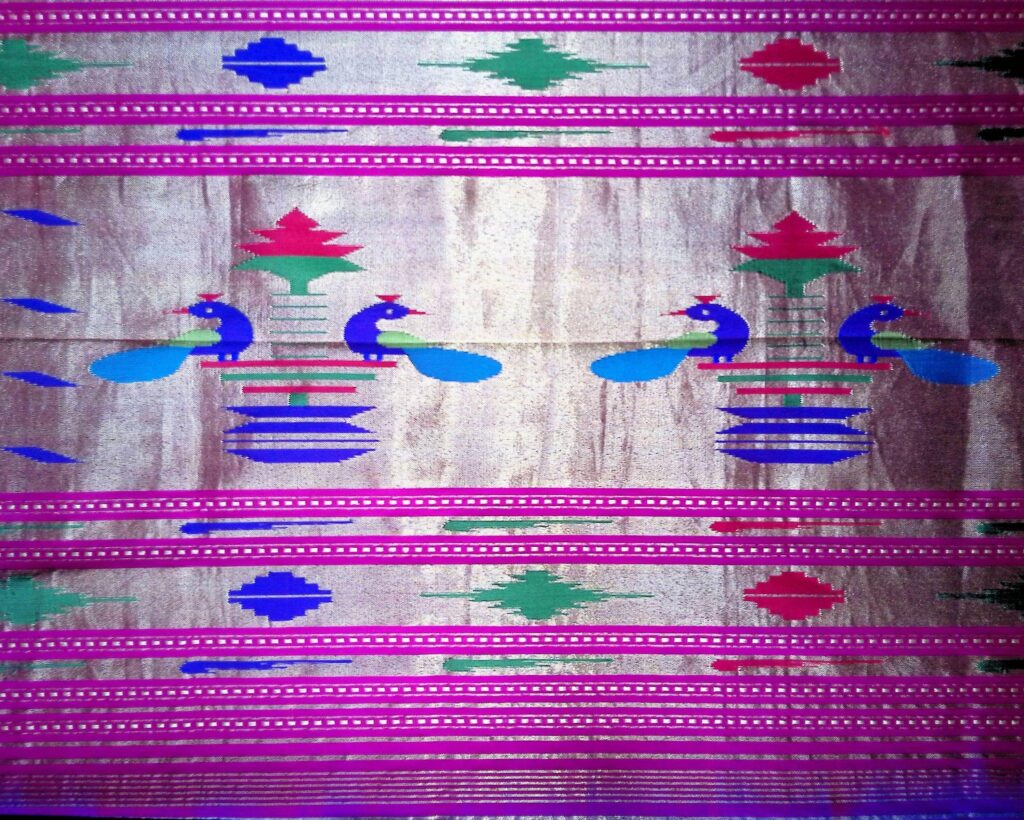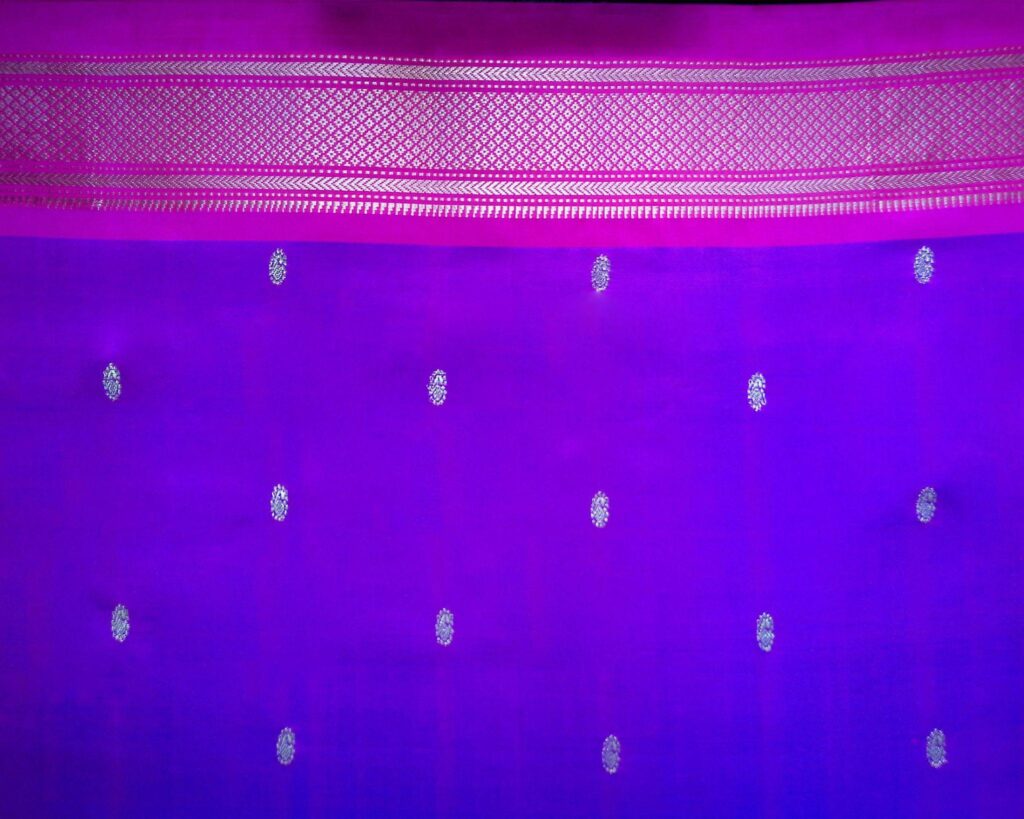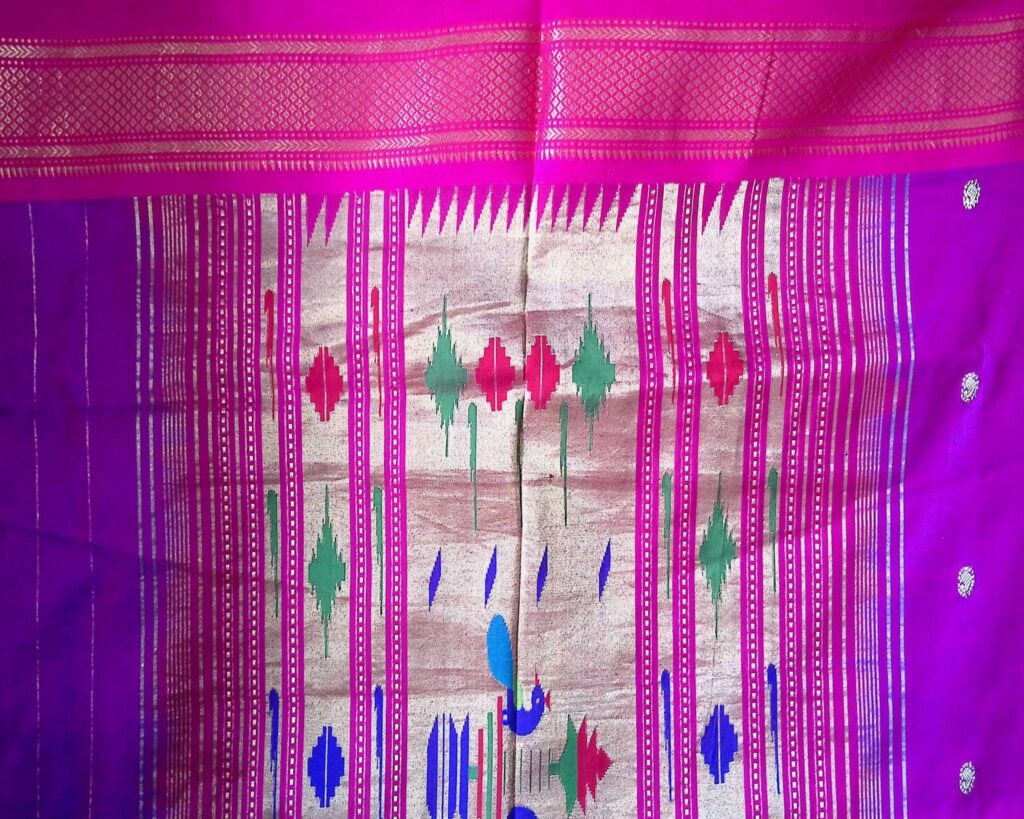Maharashtra
Lorem ipsum dolor sit amet, consectetur adipiscing elit. Ut elit tellus, luctus nec ullamcorper mattis, pulvinar dapibus leo.
Paithani saree
Paithani has been mentioned in Buddhist Literature since the 3rd century B.C. The Peshwas patronized the weavers of the paithani, and it was referred to as the “Golden Age of Paithani”. As the location is near to the Ajanta caves, the Kamal or Lotus motif “Ajanta motif” has been found in the sarees. Another recurring motif is the Hans motif (Swan) and coin motif.
Origin
Paithani of Aurangabad
Introduction And History
Paithani has been mentioned in Buddhist Literature since the 3rd century B.C. The Peshwas patronized the weavers of the paithani, and it was referred to as the “Golden Age of Paithani”. As the location is near to the Ajanta caves, the Kamal or Lotus motif “Ajanta motif” has been found in the sarees. Another recurring motif is the Hans motif (Swan) and coin motif.
Region Practiced
The sarees are made in Paithan village, and now it is also produced in Yeola near Nashik.
Fibres/Material Used
Pure Silk & Real zari ( 1 kg of Gold & 1 tola of copper)
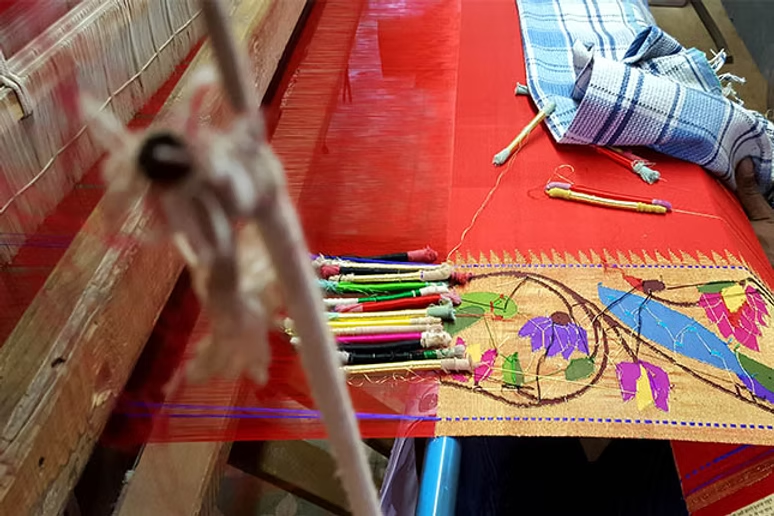
Used Colours
Pitamber(Yellow), Laal(Red), Popti(Parrot Green), Morpankhi(Peacock feather colours), Anjeer(Green, Rust), Samprus(Red, Green), Aboli(Orange, Pink), Vangi(Purple), Motiya(Pinkish White)
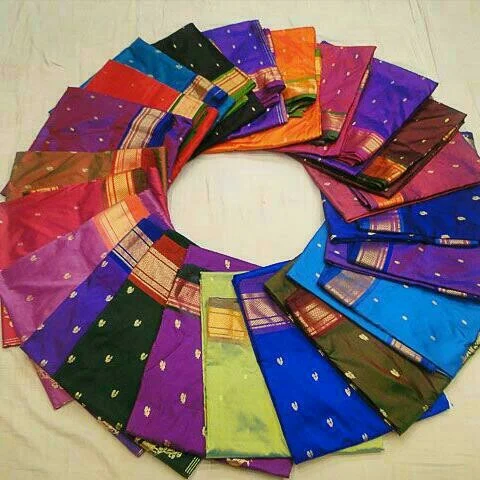
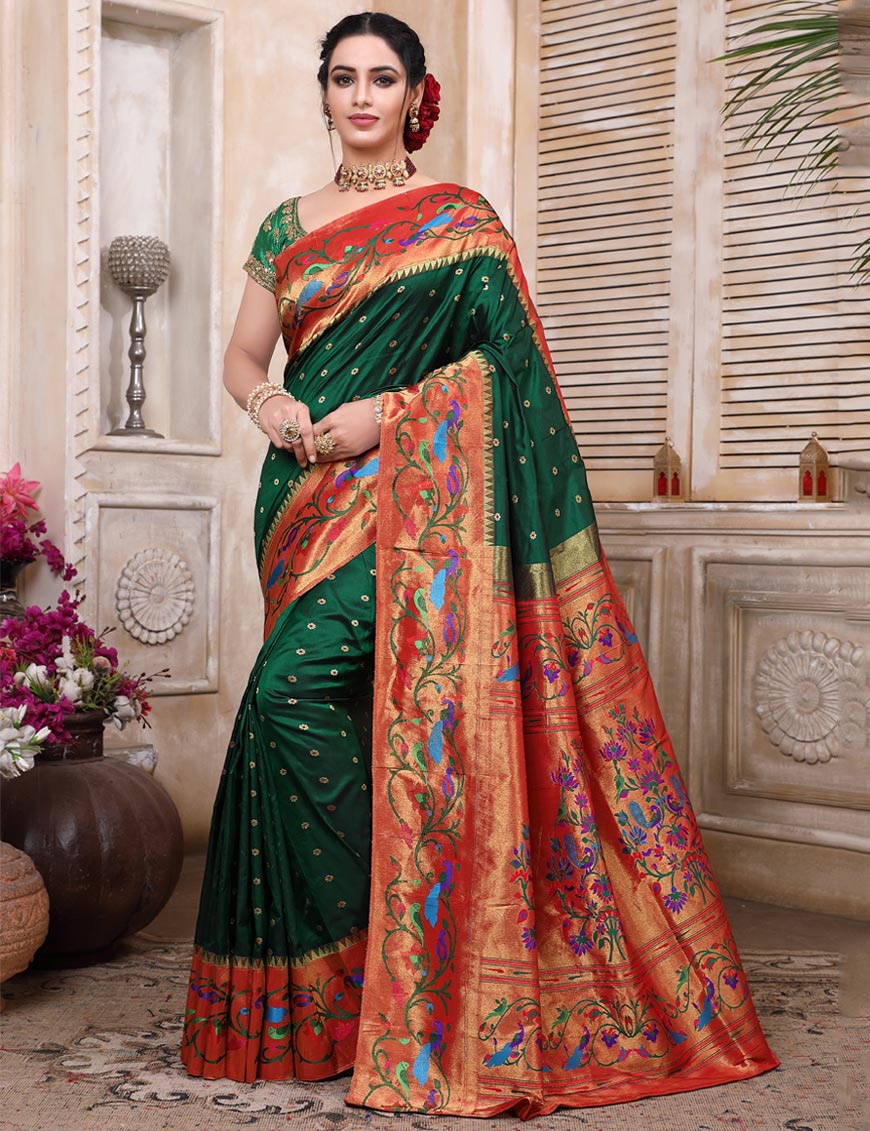
Manufacturing Method
Style of the saree
Pallu- ½ yard to 1 yard with an extension at two corners.
Border- 3 or 9 inches wider.
Pallu is bordered by zari and silk threads. The entire border is provided with an outline of a temple or mango motif called Mukri.
Three types of silk threads utilized
- Charkha: It is very common. It is inexpensive, lacks luster, and is irregular.
- Ciddle-Gatta: Fine quality silk, thin shear, shiny, smooth and even, fine quality silk.
- China silk: Expensive to work with.
Types of Paithani
- Traditional Paithani
- Brocade Paithani
- The traditional type with a 28-inch pallu design takes comparatively less time to weave since the work is less complex.
- The brocade Paithani saree, however, contains a complex pallu design of 40 inches.
- Paithani with a symmetrical border has a conventional pattern on the border, while the pallu contains differently designed motifs such as Parrot, Peacock, Asavali (flower), Ajanta Lotus, Raj Hanse, and Mango. The brocade Paithani is also completely hand woven with borders.
- This dress has a royal aura to it primarily because it is woven in the same way as tapestry weaving, as compared to employing conventional weaves
Classification by motif
- Bangadi Mor – Bangadi is bangle and mor is peacock. So bangadi mor is a peacock in a bangle or bangle shape. The design is woven on the pallu, the pattern sometimes having a single dancing peacock. The sarees with this design are quite costly due to the design.
- Munia brocade – Munia is the name for parrot. Parrots are embroidered on the pallu and the border. Parrots are always leaf green. The silk parrots are also referred to as tota-maina.
- Lotus brocade – lotus designs are used in pallu and occasionally on the border. The lotus design has 7-8 colors.
Classification by weaving
- Kadiyal border sari – the word kadiyal means interlocking. The warp and the weft of the border are of the same color, while the body has different colors for warp and weft.
- Kad/Ekdhoti – one shuttle is employed in the weaving of the weft. Warp yarn color differs from weft yarn color. It possesses narali border and plain buttis such as paisa, watana, etc. Kad is also a type of lungi and is worn by male Maharashtrians.
Classification by Dyes/colors
The extremely fine colors of the Paithani silk saris provide it with a special touch. The colors can be single or be produced through the combination of multiple colored yarns. The usual colors used in these saris are:
- ‘Kalichandrakala’: The fine black color and red border are the specialties of this sari.
- ‘Raghu’: Green colored Paithani sari
- ‘Shirodak’: This is a plain white Paithani sari. The Shirodak is a very classy white saree that is mostly worn by women on a very formal occasion
Other names are-
- uddani (light black),
- pophali (yellow),
- neeligungi (blue),
- pasila (mix of green, red, and pink),
- pheroze (mix of green, white, and red),
- samprus (mix of green and red)
- kusumbi (mix of purple and red).



